ΣΧΟΛΙΟ ΙΣΤΟΛΟΓΙΟΥ : Οι Η.Π.Α θα αποκαλύψουν και άλλα από το φουτουριστικό στρατιωτικό υλικό τους, υπάρχουν και άλλα ..απλά αποκαλύπτουν όσα θέλουν να αποκαλύψουν.Ο λόγος που τα αποκαλύπτουν είναι οι υπερηχητικοί πύραυλοι της Ρωσίας.Αλλά ακόμα και να στοχεύσει κανείς υπερηχητικά αντικείμενα στην ατμόσφαιρα, δεν είναι εύκολο και αυτό λόγο του πλάσματος.Το να τα καταρρίψει κανείς είναι ακόμα πιο δύσκολο.
Specifically, Griffin told reporters here,
Note that Griffin’s speaking only about interceptors, missiles that shoot down other missiles. He didn’t comment on lasers except to note them as a promising possibility. (In the past, he’s told Congress he wants a megawatt-plus laser in space by the late 2020s).
Air-Launched or Space-Based?
It is also possible, Griffin noted, for an aircraft to shoot down a
ballistic missile in boost phase. The launch platform could be either a
manned fighter — the stealthy F-35
has gotten a lot of attention, but the older F-15 could do the job as
well, he said — or an unmanned drone — which he said might be “more
cost-effective” than a manned fighter. (Griffin didn’t go into details,
but unmanned aircraft can dispense with bulky, costly life support
systems and can stay aloft longer than a human can endure). Such an
airborne boost phase intercept would require modifying current
air-to-air missiles such as the AMRAAM to take on new types of targets,
Griffin said. But that’s entirely doable against “limited threats,” he
said, and in a shorter timeframe than developing a space-based
interceptor.
(For those who need a reminder, an F-15 fired an anti-satellite weapon and successfully destroyed an American bird in September 1985. Shooting down a satellite isn’t quite the same as hitting a ballistic missile in flight, but there are similarities.)
That said, space-based interceptors are an “easy problem” to solve, Griffin said. (Remember, this is only against ballistic
missiles in space, not cruise missiles in the air). “It’s not
technically that hard to do,” he said. “It does represent a substantial
policy shift (i.e. allowing space-based weapons) and it’s a new cost.”
How big a cost? Less than you’d think, Griffin said. “The idea of space-based interceptors has been in some ways a victim of unrealistically high, uninformed cost estimates,” he said. “I’ve made my own preliminary cost estimates… and I can’t figure out a way to make them cost as much as some of the numbers I’ve seen tossed around the media (like) many tens of billions of dollars.” ($67 to $109 billion is commonly cited).
So, in the long run, which is better: air-launched or space-based boost phase interceptors? “I don’t know,” Griffin said frankly. “It’s too soon to pick a winner.” After all, he’s the man in charge of research: If we already knew exactly how to do this, it would be Undersecretary for Acquisition Ellen Lord‘s job to build it, not his.
What Griffin does know is that the US needs to develop a way to shoot down ballistic missiles as they boost into space. Current missile defense systems all have to wait until the mid-course phase, when the warhead separates from the rocket — making it a much smaller, tougher target — and coasts through space on a parabolic arc (hence the term “ballistic”) — which means there’s no rocket exhaust to home in on. “As John (Hyten) pointed out yesterday and Sam Greaves pointed out today (at the SMD conference),” Griffin said, “waiting until the adversary threat is in the mid-course is basically giving the adversary a free pass to launch in the first place.”
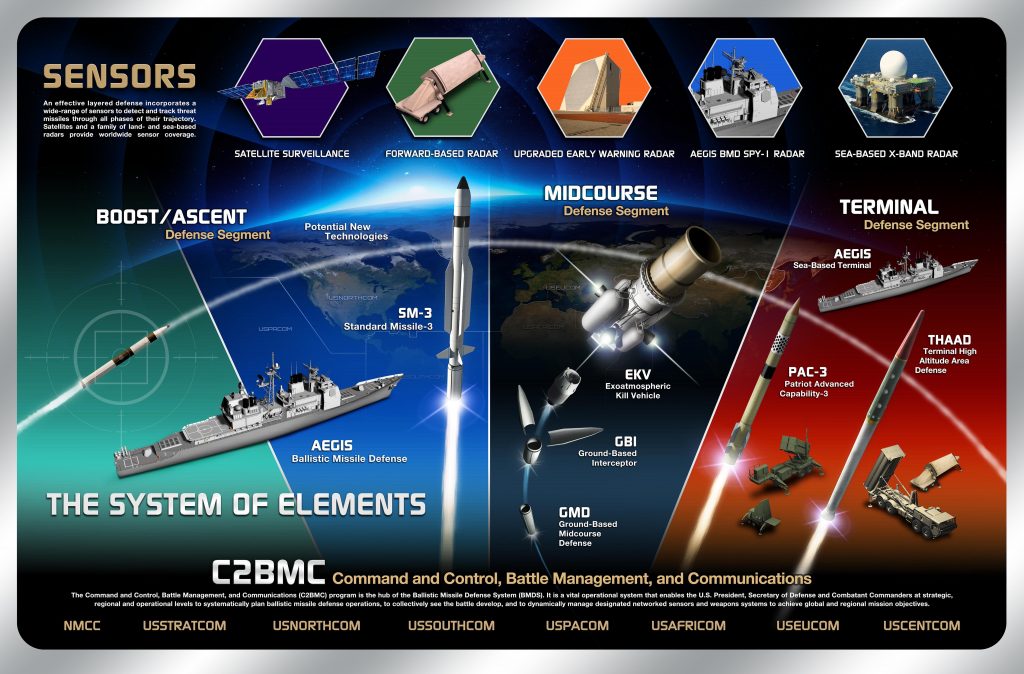 Reagan, Russia, and China
Reagan, Russia, and China
Space-based defenses — radars, lasers and physical interceptors — — were central to Reagan’s Strategic Defense Initiative, but the technology just couldn’t catch up with the vision. Just six months ago, however, the chiefs of both the Missile Defense Agency, Lt. Gen. Sam Greaves, and Strategic Command, Gen. John Hyten, publicly declared they needed new sensor satellites to detect and track hypersonic weapons. Then, on July 26, Congress cleared the National Defense Authorization Act for 2019, which included language telling the Pentagon to study space-based interceptors.
It’s important to note what this is not. Reagan’s dream of stopping massed ICBMs remains out of reach, and Mutual Assured Destruction isn’t going away, Griffin said. But rapidly evolving missile threats — particularly China’s massive investment in precision-guided weapons with non-nuclear warheads, he said — could tip the balance in a future conventional war.
“It’s nice. President Putin got on TV and showed off his hypersonic missile. Okay, so what?” Griffin said. The Russian hypersonic program is for a nuclear-tipped weapon, but they already have plenty of ICBMs. (In fact, ICBMs are faster than hypersonic weapons; the difference is one must fly a fixed ballistic curve through space while the other can stay in the atmosphere and maneuver). “Through what we’ve called, for generations now, Mutually Assured Destruction, we are hostage to Russian ICBMs and they are hostage to ours,” he said. “Maybe I’m missing something — that’s always possible… but I do not see what a hypersonic nuclear missile brings to the strategic missile posture that earlier systems don’t.”
By contrast, “the Chinese have been much more thoughtful in their systems development,” he said, “because they are developing long-range, tactical, precision-guided systems that could be really influential in a conventional fight.” That means the Chinese hypersonics could actually be used in a less-than-apocalyptic conflict, making them a much more likely threat than nukes. In a new Pacific war, US airbases, aircraft carriers, and other vital units would be in danger from hypersonic threats that fly too low for conventional ballistic missile defense and too fast for conventional cruise missile defenses.
“The Chinese ability to hold our forward-deployed assets at risk with very high-speed, very hard to intercept precision-guided systems — that’s something to which we have to respond,” Griffin said. “We will respond.”
Let 100 Hypersonic Flowers Bloom
Part of that response is a spate of different programs to develop our own offensive hypersonic weapons. All the ones in progress now predate Griffin’s appointment — “I’m delighted” so much is already in motion. “Which of those is going to prove to be a winner is an interesting question,” Griffin told a reporter who asked if there were too many irons in the hypersonic fire. “That’s why DARPA exists… It’s premature for me to suppose that we have ‘overlap,’ as you put it. I don’t know what’s going to work yet.”
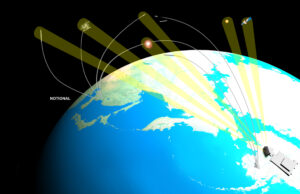 On the defensive side, “the first step in that response absolutely
has to be a sensor layer from space,” Griffin said. As Gen. Hyten has
said, that there aren’t enough islands in the Pacific to put radars on
to cover all the possible angles of approach, (his line is they might
cost $1 billion each and would have to stretch across the Pacific) both
because the Pacific is huge and because hypersonic cruise missiles can
fly around your radars in a way ballistic missiles can’t.
On the defensive side, “the first step in that response absolutely
has to be a sensor layer from space,” Griffin said. As Gen. Hyten has
said, that there aren’t enough islands in the Pacific to put radars on
to cover all the possible angles of approach, (his line is they might
cost $1 billion each and would have to stretch across the Pacific) both
because the Pacific is huge and because hypersonic cruise missiles can
fly around your radars in a way ballistic missiles can’t.
“Unless you wallpaper the earth with radars, you can’t do it from the ground or ocean,” Griffin said. “You just need a lot of radars. They’re very expensive and they themselves become targets….It’s just not workable. The only real way to see these things coming is from space.”
To cover the earth, you need sensors in space, which is our main way of detecting ballistic missile launches today. But hypersonic missiles flying in the atmosphere burn much less bright than rockets launching warheads into space.
“They’re hard to see from high orbit, because they’re not as bright,” Griffin said. “They’re a factor of ten or more dimmer than strategic missile, and so we have to get closer (i.e. a lower orbit) if we intend to see and track them. Now we know we can: We’ve done this from orbit with experimental spacecraft.”
For all these space-based options, Griffin said, “this is not a technology challenge. This is a policy decision-making challenge.”
ΠΗΓΗ
Some 35 years after Ronald Reagan's famous Star Wars speech, the Pentagon's R&D chief said that space-based missile defenses are technically feasible and reasonably affordable.
SPACE & MISSILE DEFENSE SYMPOSIUM.: Some 35 years after Ronald Reagan’s famous Star Wars speech, the Pentagon’s R&D chief said that space-based missile defenses are technically feasible and reasonably affordable. Since Reagan’s day, technology has advanced enough that putting both sensors and shooters in space is not only possible but “relatively easy,” Undersecretary for Research & Engineering Mike Griffin said. What’s more, past estimates of the cost of space-based interceptors have been “unrealistically,” even “naively” high.Specifically, Griffin told reporters here,
- The US “absolutely” needs space-based sensors to detect low-flying hypersonic cruise missiles, a new threat that’s much harder to spot from orbit than ICBMs; and
- We probably need space-based interceptors to shoot down high-flying ballistic missiles during the boost phase, the period before the warheads separate from the rocket.
Note that Griffin’s speaking only about interceptors, missiles that shoot down other missiles. He didn’t comment on lasers except to note them as a promising possibility. (In the past, he’s told Congress he wants a megawatt-plus laser in space by the late 2020s).
(For those who need a reminder, an F-15 fired an anti-satellite weapon and successfully destroyed an American bird in September 1985. Shooting down a satellite isn’t quite the same as hitting a ballistic missile in flight, but there are similarities.)
How big a cost? Less than you’d think, Griffin said. “The idea of space-based interceptors has been in some ways a victim of unrealistically high, uninformed cost estimates,” he said. “I’ve made my own preliminary cost estimates… and I can’t figure out a way to make them cost as much as some of the numbers I’ve seen tossed around the media (like) many tens of billions of dollars.” ($67 to $109 billion is commonly cited).
So, in the long run, which is better: air-launched or space-based boost phase interceptors? “I don’t know,” Griffin said frankly. “It’s too soon to pick a winner.” After all, he’s the man in charge of research: If we already knew exactly how to do this, it would be Undersecretary for Acquisition Ellen Lord‘s job to build it, not his.
What Griffin does know is that the US needs to develop a way to shoot down ballistic missiles as they boost into space. Current missile defense systems all have to wait until the mid-course phase, when the warhead separates from the rocket — making it a much smaller, tougher target — and coasts through space on a parabolic arc (hence the term “ballistic”) — which means there’s no rocket exhaust to home in on. “As John (Hyten) pointed out yesterday and Sam Greaves pointed out today (at the SMD conference),” Griffin said, “waiting until the adversary threat is in the mid-course is basically giving the adversary a free pass to launch in the first place.”

The
current missile defense system is focused on ballistic threats, not
cruise missiles, and lacks a boost-phase intercept option.
Space-based defenses — radars, lasers and physical interceptors — — were central to Reagan’s Strategic Defense Initiative, but the technology just couldn’t catch up with the vision. Just six months ago, however, the chiefs of both the Missile Defense Agency, Lt. Gen. Sam Greaves, and Strategic Command, Gen. John Hyten, publicly declared they needed new sensor satellites to detect and track hypersonic weapons. Then, on July 26, Congress cleared the National Defense Authorization Act for 2019, which included language telling the Pentagon to study space-based interceptors.
It’s important to note what this is not. Reagan’s dream of stopping massed ICBMs remains out of reach, and Mutual Assured Destruction isn’t going away, Griffin said. But rapidly evolving missile threats — particularly China’s massive investment in precision-guided weapons with non-nuclear warheads, he said — could tip the balance in a future conventional war.
“It’s nice. President Putin got on TV and showed off his hypersonic missile. Okay, so what?” Griffin said. The Russian hypersonic program is for a nuclear-tipped weapon, but they already have plenty of ICBMs. (In fact, ICBMs are faster than hypersonic weapons; the difference is one must fly a fixed ballistic curve through space while the other can stay in the atmosphere and maneuver). “Through what we’ve called, for generations now, Mutually Assured Destruction, we are hostage to Russian ICBMs and they are hostage to ours,” he said. “Maybe I’m missing something — that’s always possible… but I do not see what a hypersonic nuclear missile brings to the strategic missile posture that earlier systems don’t.”
By contrast, “the Chinese have been much more thoughtful in their systems development,” he said, “because they are developing long-range, tactical, precision-guided systems that could be really influential in a conventional fight.” That means the Chinese hypersonics could actually be used in a less-than-apocalyptic conflict, making them a much more likely threat than nukes. In a new Pacific war, US airbases, aircraft carriers, and other vital units would be in danger from hypersonic threats that fly too low for conventional ballistic missile defense and too fast for conventional cruise missile defenses.
“The Chinese ability to hold our forward-deployed assets at risk with very high-speed, very hard to intercept precision-guided systems — that’s something to which we have to respond,” Griffin said. “We will respond.”
Let 100 Hypersonic Flowers Bloom
Part of that response is a spate of different programs to develop our own offensive hypersonic weapons. All the ones in progress now predate Griffin’s appointment — “I’m delighted” so much is already in motion. “Which of those is going to prove to be a winner is an interesting question,” Griffin told a reporter who asked if there were too many irons in the hypersonic fire. “That’s why DARPA exists… It’s premature for me to suppose that we have ‘overlap,’ as you put it. I don’t know what’s going to work yet.”

The Long-Range Discrimination Radar will be better able to tell apart different types of targets, as illustrated here.
“Unless you wallpaper the earth with radars, you can’t do it from the ground or ocean,” Griffin said. “You just need a lot of radars. They’re very expensive and they themselves become targets….It’s just not workable. The only real way to see these things coming is from space.”
To cover the earth, you need sensors in space, which is our main way of detecting ballistic missile launches today. But hypersonic missiles flying in the atmosphere burn much less bright than rockets launching warheads into space.
“They’re hard to see from high orbit, because they’re not as bright,” Griffin said. “They’re a factor of ten or more dimmer than strategic missile, and so we have to get closer (i.e. a lower orbit) if we intend to see and track them. Now we know we can: We’ve done this from orbit with experimental spacecraft.”
For all these space-based options, Griffin said, “this is not a technology challenge. This is a policy decision-making challenge.”
ΠΗΓΗ
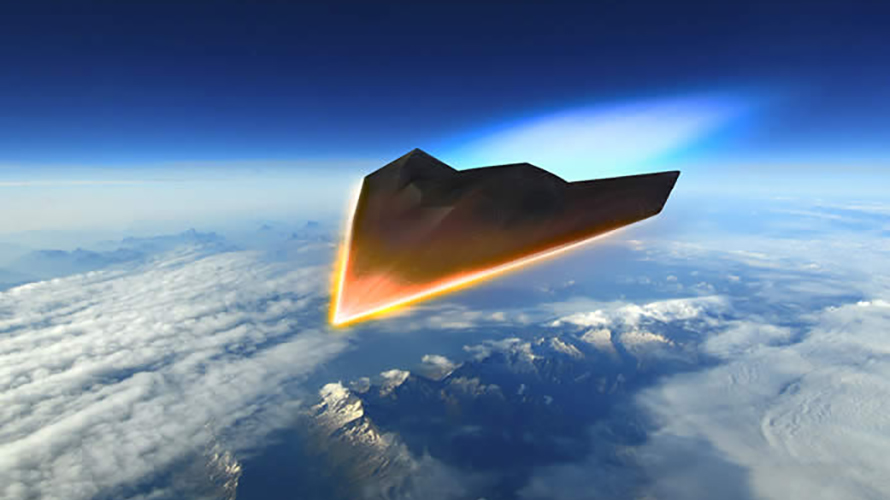


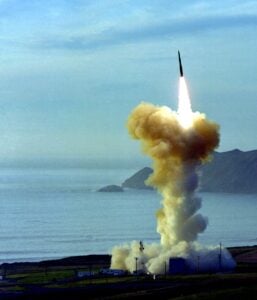

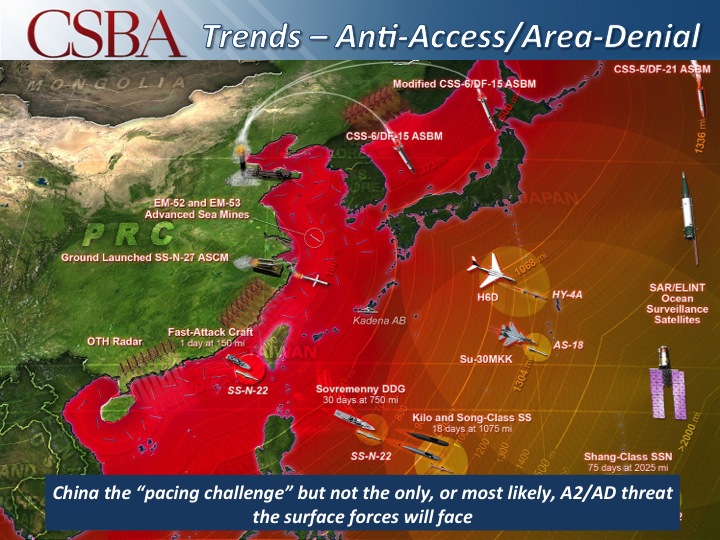
Δεν υπάρχουν σχόλια:
Δημοσίευση σχολίου